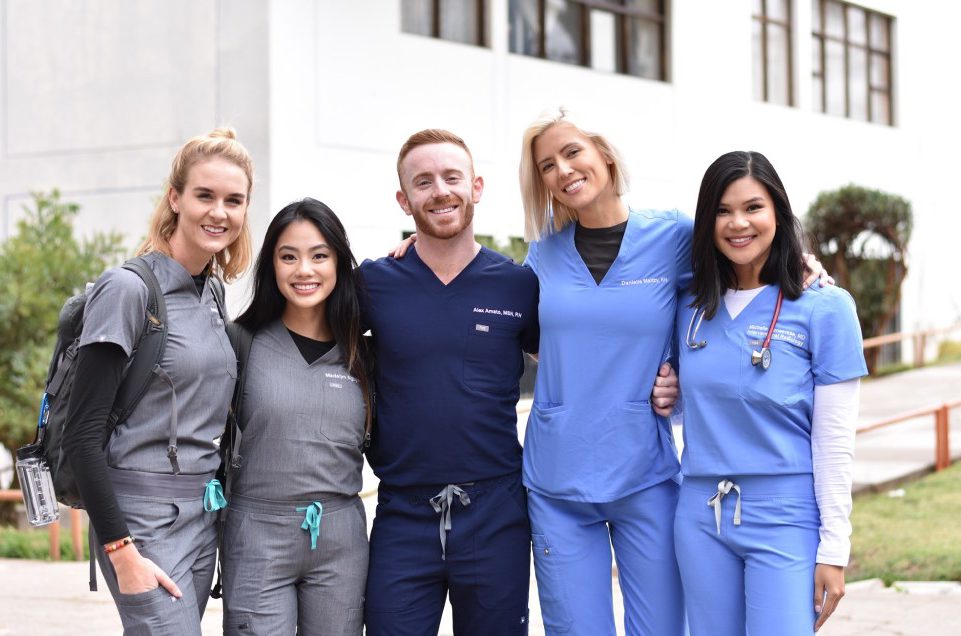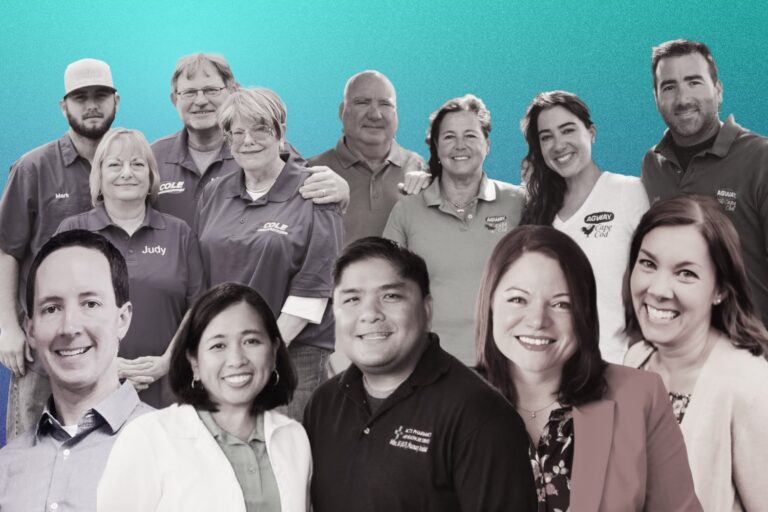How Figs Has Redesigned the Medical Apparel & Redefined the Medical Persona
There were times when medical scrubs were considered an essential yet “hated” uniform. Indeed, for several individuals, especially healthcare practitioners, medical scrub – just like open parking spots, triple-A batteries, or toilet paper – is something they do not ever think about … until they really need it.
Whereas medical scrubs emerge as an extremely lucrative market with healthcare being the largest U.S. employer – with nearly 20,000 healthcare workers (as of March 2021), to be exact – no one liked them until Figs came in and made them cool, far beyond a conventional uniform. Founded in 2013, Figs was the brainchild of fashion designer and medical school dropout Heather Hasson, who abandoned her necktie company — also called Figs — and joined forces with former Blackstone Group associate Trina Spear to establish a start-up redefining medical apparel landscape with better-fitting, higher quality scrubs.
Let’s go explore how this Los Angeles-based startup has upended the medical apparel industry and yielded millions in revenue during its eight-year trajectory!
The Very First Stitch: Figs’ Journey Started with Baggy & Scratchy Scrubs
Similar to what Warby Parker did for glasses and Casper did for mattresses, Figs has been doing for scrubs. Nevertheless, whilst those startups design universal appeal offerings, Figs caters solely to M.D.s, P.A.s, R.N.s, D.D.S.s as well as the various orderlies and attendants that lack initials yet still need scrubs.
Neither Heather Hasson nor Trina Spear has those letters trailing their names either. Yet, they have made Figs a household name within medical sphere.

In fact, the idea for Figs emerged when Hasson had coffee with a friend of hers, a nurse practitioner, who was on a quick break from her hospital job. As her friend arrived for a coffee date in baggy, scratchy scrubs and tugged up that scrub pants for the third time, she exclaimed that she couldn’t stand her workwear.
“I said, ‘I can’t believe you still wear this—where are you shopping?’” she remembered. If the scrubs were bad, the medical supply store Hasson’s friend pointed her to was worse, with racks of unrefined scrubs crammed next to wheelchairs and canes.
With the help of Trina Spear, who had previously tracked medical-supply companies in the Blackstone Group’s private equity division, Hasson learned that the majority of medical professionals must buy their own scrubs. Until the late 1980s, when scrub was still a business-to-business industry, “hospitals did buy on behalf of their staff.” Yet, not too long then, “budgets were constrained and the hospitals said, ‘We’re not going to do this anymore, we can’t afford it.’” Doctors and nurses were then left picking up the tab. Whereas the medical clothing market is now a $36 billion industry in the U.S. alone, and a $86 billion industry worldwide, little else about it had changed as of 2013. Coarse cotton one-size-fits-most scrubs were still sold by large-scale supply shops for as little as $10 a top.
With a background in fashion and her understanding of the complexity of the apparel landscape, Hasson couldn’t believe that her friend, who spent 16-hour days serving others wearing boxy, scratchy, uncomfortable scrubs— and worse still — she didn’t have any options available to improve her situation.
She could not help but think about how many apparel companies were focused on giving professional athletes every possible advantage through cutting-edge materials and purpose-driven designs. So, why should the doctors and nurses — who Hasson calls “incredible humans” — have to compromise when consumers in so many other categories don’t?
There had to be a line of comfortable, functional, and flattering scrubs on the market. After hopelessly searching for months for comfortable and functional scrubs, Hasson realized she had to take matters into her own hands.
Then, Hasson borrowed a pair of her friend’s scrubs and entirely redesigned them, taking in the inseam, moving the pockets, bringing in the shoulders, and more. Her friend adored them — and so did her friend’s colleagues. As words spread, Hasson started receiving more and more calls to fix scrubs.
At that time, it was apparent that both the design and distribution of scrubs were antiquated and ripe for disruption, and that healthcare professionals deserved innovative, functional products and an efficient distribution model built around their particular needs. Given that, Hasson quickly turned to her best friend Trina Spear to see if they could collaborate on a larger scale: rather than just fixing scrubs, they could form the most technically advanced, comfortable, and beautifully designed scrubs possible.
This is why Figs was established in 2013, since then the company has thrived ever as a solution for medical professionals of all specializations. “We’re not just changing an antiquated industry, we’re changing purchasing behaviors that have been ingrained in this community for over a hundred years,” Hasson stated.
“The highest standards didn’t exist, so we created them.” – Heather Hasson & Trina Spear, Co-CEOs and Co-Founders of Figs
How Figs Hit the Ground Running
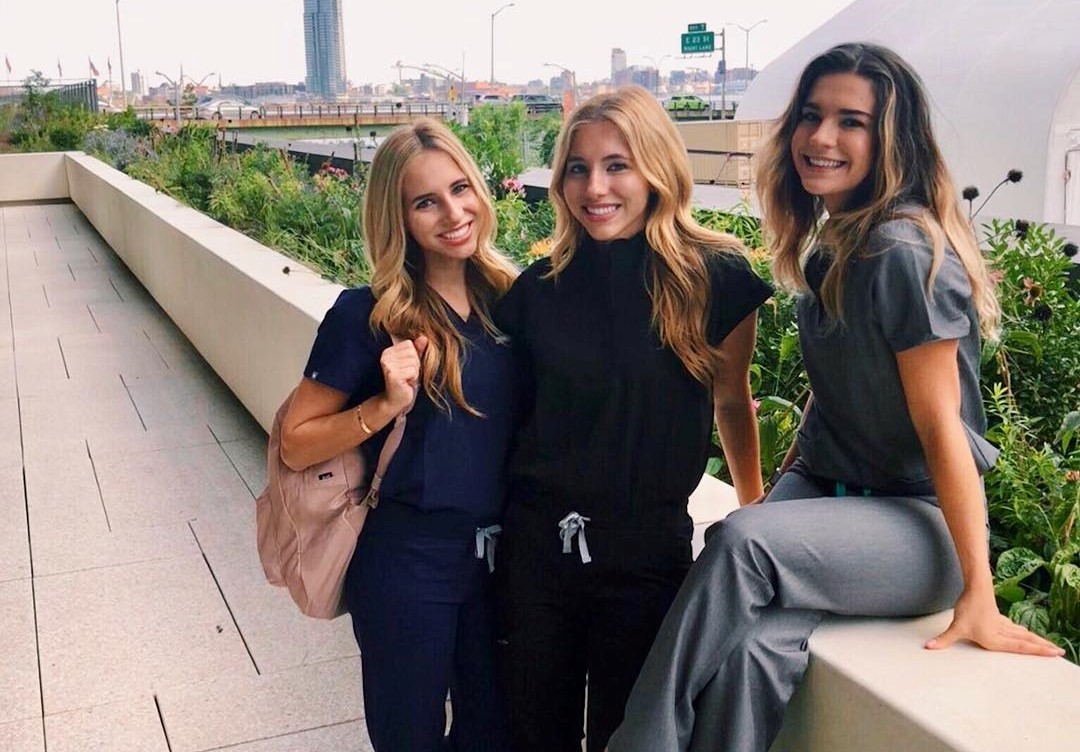
Figs entered into the “sleepy” yet lucrative scrubs market with products of $38-and-up prices, innovative styles and a Silvadur-treated antimicrobial, wrinkle-resistant and odor-free fabric that took nearly two years to develop. Heather Hasson and Trina Spear also introduced its direct-to-consumer model, a model that was popularized by Warby Parker in 2010 and quickly spread across industries from shaving to baby clothes.
In the early days, these two women parked themselves in hospitals, soaking up feedback from the staff. “The first year, we were very scrappy. We went to where our customers were. At 7 a.m. and 7 p.m.–that’s when shifts change–we put on our scrubs, parked a coffee cart outside of a hospital, and passed out free cups of coffee. The doctors and nurses would notice how cute the scrubs were and we would pull a set out of my car to sell,” shared Hasson, recalling on Figs’ first days.
As shared by the Co-CEO Trina Spear, “There was a viral, word-of-mouth effect. A hospital is a lot like a college campus. We know where our customers are eating, sleeping, and working.” And Hasson added, “Actually, it’s stronger than on a college campus. At college, everyone wants to look different. At a hospital, everyone wants to look alike. When a new nurse joins the team, she’ll ask, “Where do you get your scrubs?””
Their hospital visits did land them several valuable observations. For instance, they discovered that doctors had been tying their wedding rings to the drawstring of their pants because standard scrubs skimped on pockets, which inspired the Figs duo to add a zippered pocket to their pants. The brand also trimmed down the sack-like fit of traditional scrubs, offering shapely “jogger” style pants while banishing “one-size” tops.
“They’re very slimming,” shared Danish Hasan, a registered nurse. “They don’t even look like scrubs—they look like nice clothes that you would wear out.”
In addition to hospital visits, they went to medical conferences and set up a beautiful booth. “Over three days, we’d see more than 20,000 nurse practitioners, and we’d be the only medical apparel company there. We were also the first in our industry to interact with customers on social media. We feature medical influencers on our Instagram,” shared Spear.
In fact, the medical apparel start-up has taken a “lifestyle” approach to marketing that the founders liken to that of Lululemon, the athletic-wear brand that helped make yoga a way of life. Figs has a well-curated Instagram page with over 166,000 followers that showcases customers—primarily women, who make up the majority of Figs’s customer base—in brightly lit settings, far from the mayhem of an emergency room.
Previously recognized as Best for the World B-Corp in 2015. Figs was also ranked as 21st on Inc. Magazine’s Inc. 5000 ranking of the nation’s fastest-growing companies in 2018, experiencing a 9,948% growth rate over the prior three years. Also in that year, Figs becomes the first-ever medical apparel company to open a pop-up shop with its first location in the luxury fashion district of Melrose Place, Los Angeles.
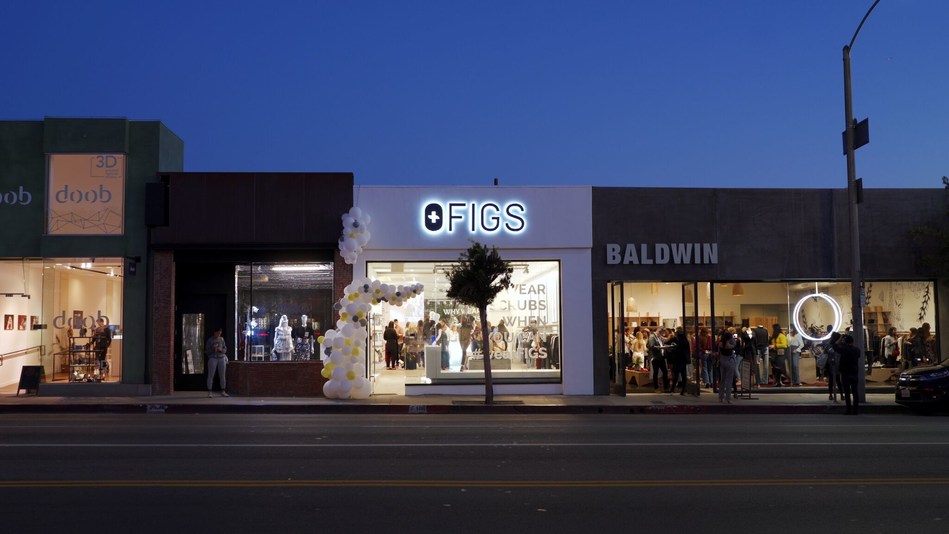
“Medical professionals have NEVER had the opportunity to shop for their uniforms like they would regular clothes, despite wearing scrubs more frequently than any other article of clothing they own. We wanted our pop-up shop to feel lively and playful, but also modern. With this space, we’re letting our consumers know that they deserve better. They deserve FIGS,” stated Heather Hasson.
“We’re experiencing tremendous growth and it’s super important to maintain the integrity of our brand. Through experiences like the pop-up and billboard campaigns, we’re letting our customers know that we’re not slowing down when it comes to reinventing the medical apparel industry and we are going to continue to show up for our community every day,” added Jenny Seyfried, VP of Brand.
Key “Ingredients” to Figs’ Stunning Success Formula
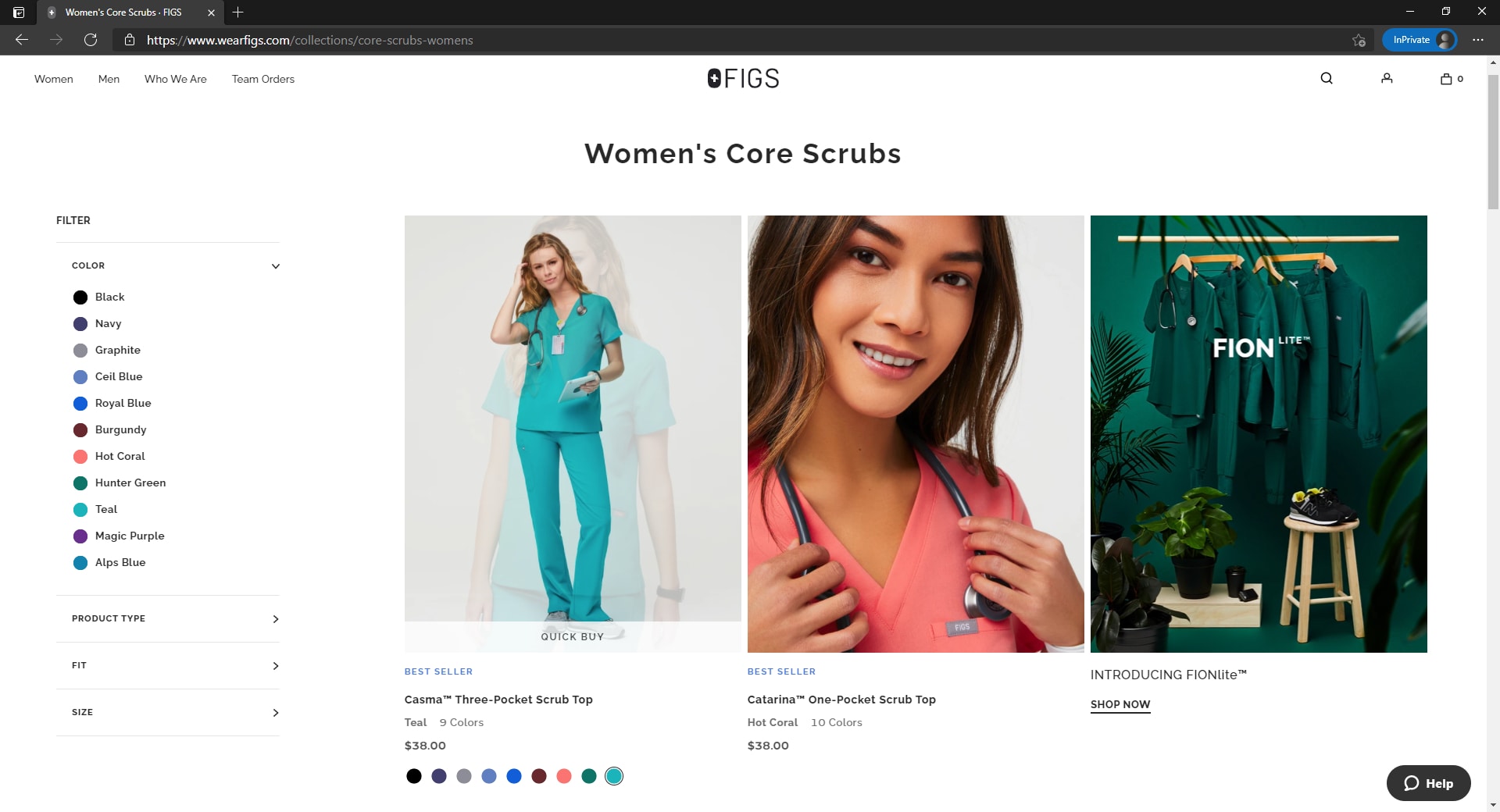
Whereas a plethora of factors could be attributable to the company’s handsome rise, there exist two critical keys that make Figs a phenomenal success.
#1. Strong Focus on Technical Comfort
Firstly and most obviously, until Figs, no other scrubs brand had ever provided a product that looked and felt much different from what was already on offer. In fact, Figs’s medical scrubs are cut much more like trendy workout clothes than pajamas, with slimmer, straighter fits. The shirts are shaped like T-shirts and designed to be tucked in, achieving that trendy hourglass shape that’s become de rigueur among stylish young people today. Meanwhile, pant legs are short, especially in the brand’s popular jogger style, and are often styled on its website with no-socks and low-profile sneakers.
“It didn’t me long before I started recognizing “Figs doctors” upon sight, and feeling like they were, somehow, a little different than the typical professional: more internet-savvy, maybe vainer, for whom the phrase “the oat milk of scrubs” is a meaningful collection of words,” shared Connie Wang, Executive Editor at Refinery29.
More importantly, when it comes to real Figs customers’ reviews, the ultimate difference of Figs products is not in how they look – but in how they feel. “They’re so comfortable,” told Karina De La Cruz, a behavioral health nurse technician from Arizona. “They’re really flexible, even though they’re nice and professional. The material is different.”
As previously mentioned, that kind of material — a proprietary fabric that took Heather and Trina two years to develop — is antimicrobial, anti-odor, stain-repellant, and has four-way stretch, which means that they not only look more like workout clothing, but they do perform like it – a necessity for medical professionals whose jobs are oftentimes more physical than they are mental. “Our proprietary fabric technology is made from what we believe to be the best combination of materials and is core-spun for maximum durability to withstand the demands of a healthcare professional’s work without sacrificing comfort.”
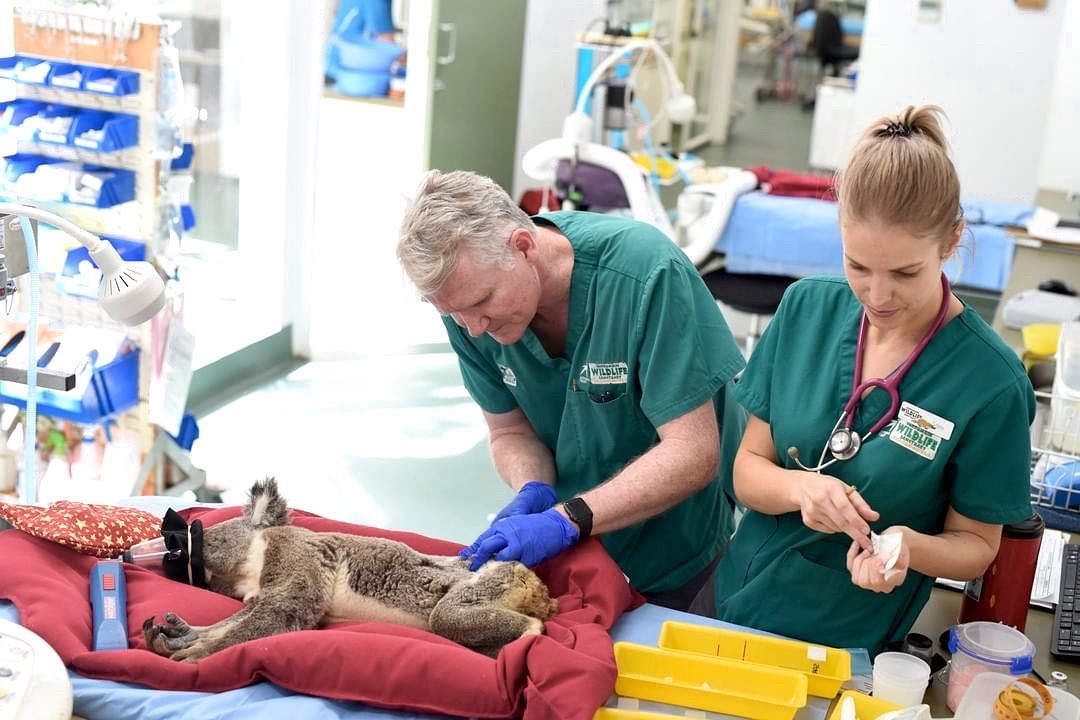
“We developed our own fabrics, down to the yarns, in L.A. before approaching factories. My 10 years in fashion helped me develop a network of factory contacts, but it was really important to me to find factories that knew how to make technical performance wear, not scrubs. Now we have an innovation lab in Taipei and 27 factories where we are the only customer,” shared Hasson.
“It is surprisingly beautiful and unexpectedly functional. It is durable, yet comfortable, and provides both freedom and restraint. It’s designed to appeal to every sense and sensation.”
#2. Efforts to Reshape the Medical Persona
Not only has Figs redefined the way that medical workers dress, but it has also been changing how they behave online.
The medical apparel company has actively encouraged their community of healthcare practitioners to attach their own public professional brand to their interior lives. Particularly, the hashtag #wearfigs is a rapidly populating stream of posts, with just a small percentage coming from Figs’ official roster of 200 ambassadors.
Challenging the kind of authoritative, stoic doctor archetype as expected by conventional people, “life-savers” are now granted the space to publicly express highly personal thoughts that they, before, were advised to keep private. Several of the captions using the #wearfigs hashtag are about the need to be seen and heard, and about feeling disenfranchised and disempowered, and the desire to be validated. They mimic the language of communities formed around intrinsic qualities such as gender, race, or illness.
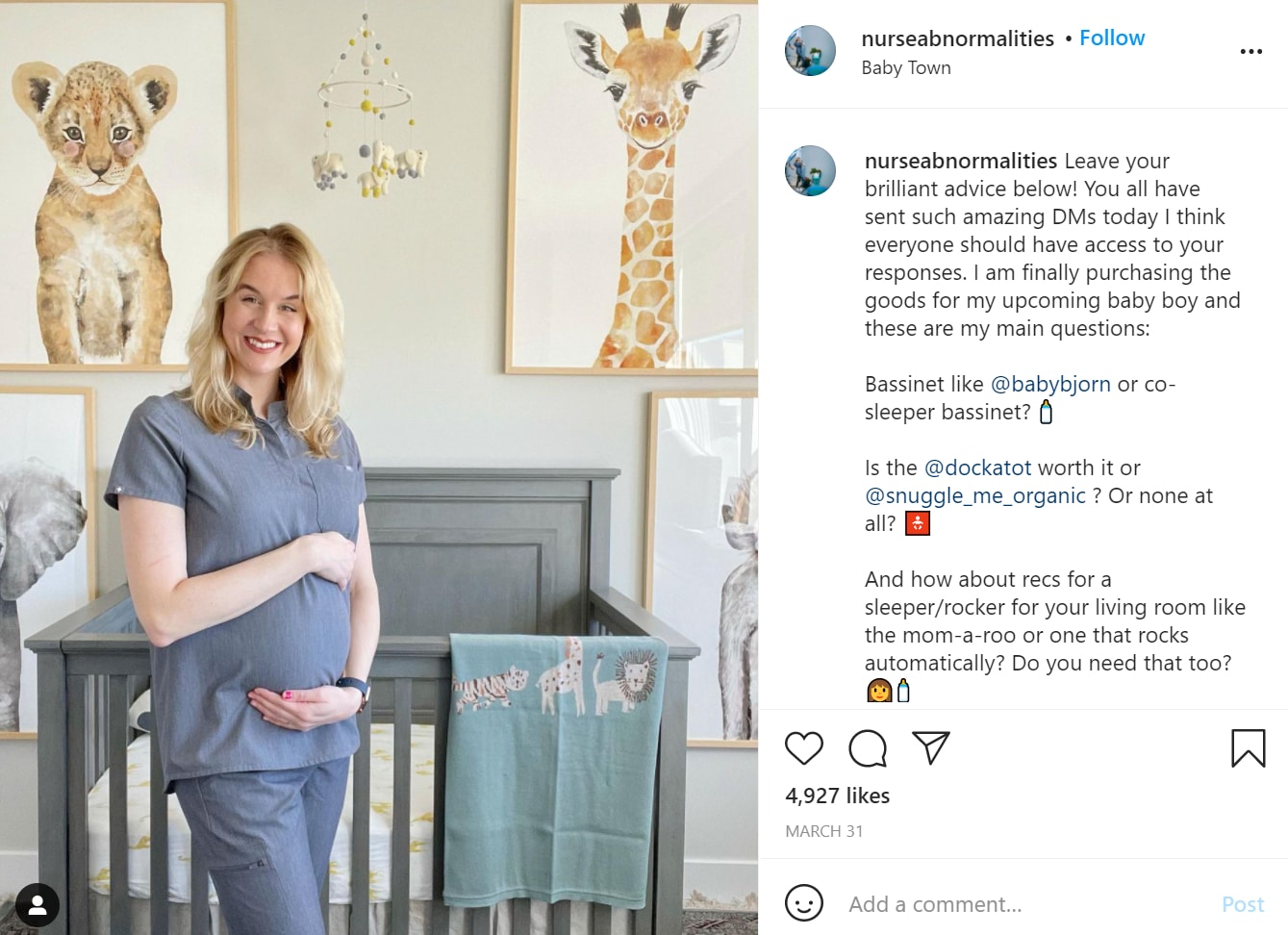
Although one could argue that the brand has subtracted a degree of professionalism associated with healthcare providers, it’s proven that Figs has opened another dimension to their identity. Undoubtedly, Figs has successfully accomplished what all clothing labels aim to do – convincing shoppers that its products are the more fashionable and stylish option to express themselves. In practice, its medical scrubs explicitly connect the image of a person in slim-fitting, cute scrubs to the persona of a medical professional who believes that bringing their whole self to work is a good thing.
Whereas Figs has built this community in service of its own marketing, the brand has evolved into the de facto “uniform” of a medical community that is not satisfied with the old definitions of how professionals should present themselves.
#3. Solid Commitment to Social Good
To name a few companies that have been doing well by doing good, this would be a serious mistake to miss Figs.
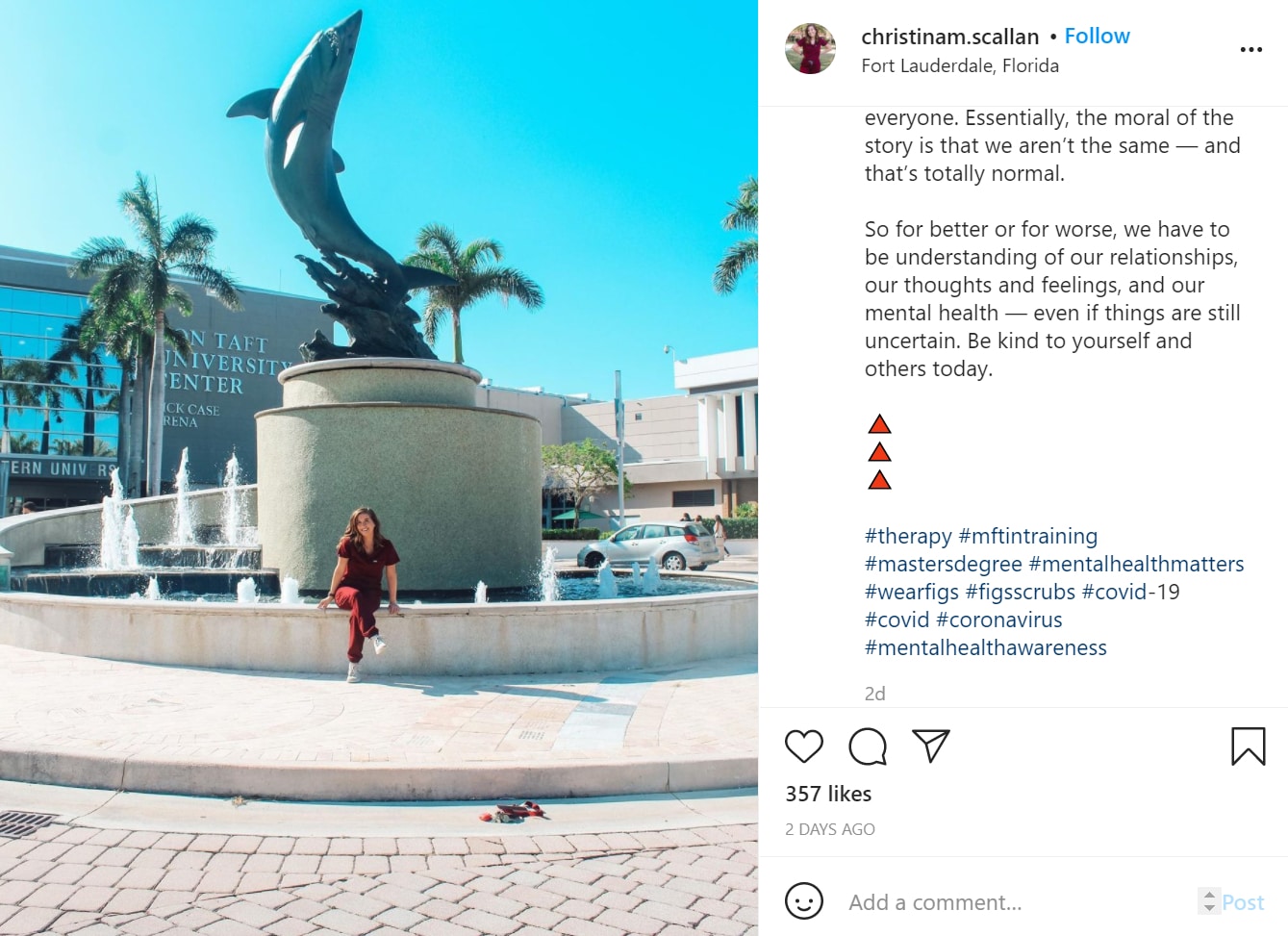
It’s fair to say that giving back has always been part of Fig’s DNA. As Figs’s philanthropic arm, the initiative “Threads for Threads” has been established from the very beginning of business inception. This initiative manifests Figs’s initial “giving-back” commitment to support healthcare professionals who work in resource-poor countries and lack the proper uniforms to do their jobs safely.
As Figs continued to grow as a company, so did the breadth of “Threads for Threads” mission. Not just about donating medical scrubs, what started as a one-for-one model progressed into a comprehensive aid and corporate social responsibility initiative.
When it comes to the recipients of “Threads for Threads”, “We work with various nonprofits, NGOs, and universities attending medical missions around the world. We have partnered with organizations such as International Medical Corps, Smile Train, Stony Brook University, and Project C.U.R.E. Our high-need medical facility partnerships are ongoing. We have been partnering with Project C.U.R.E. since the beginning of FIGS.”
Notably, the COVID-19 pandemic has magnified the indispensability of healthcare professionals. During a time when the pressures on the healthcare community have never been greater, COVID-19 relief was top of mind for Figs; in fact, they rose to the challenge by addressing PPE (Personal protective equipment) shortages, creating masks, and donating scrubs, funds and other needed products to help frontline workers during their fight against COVID-19.
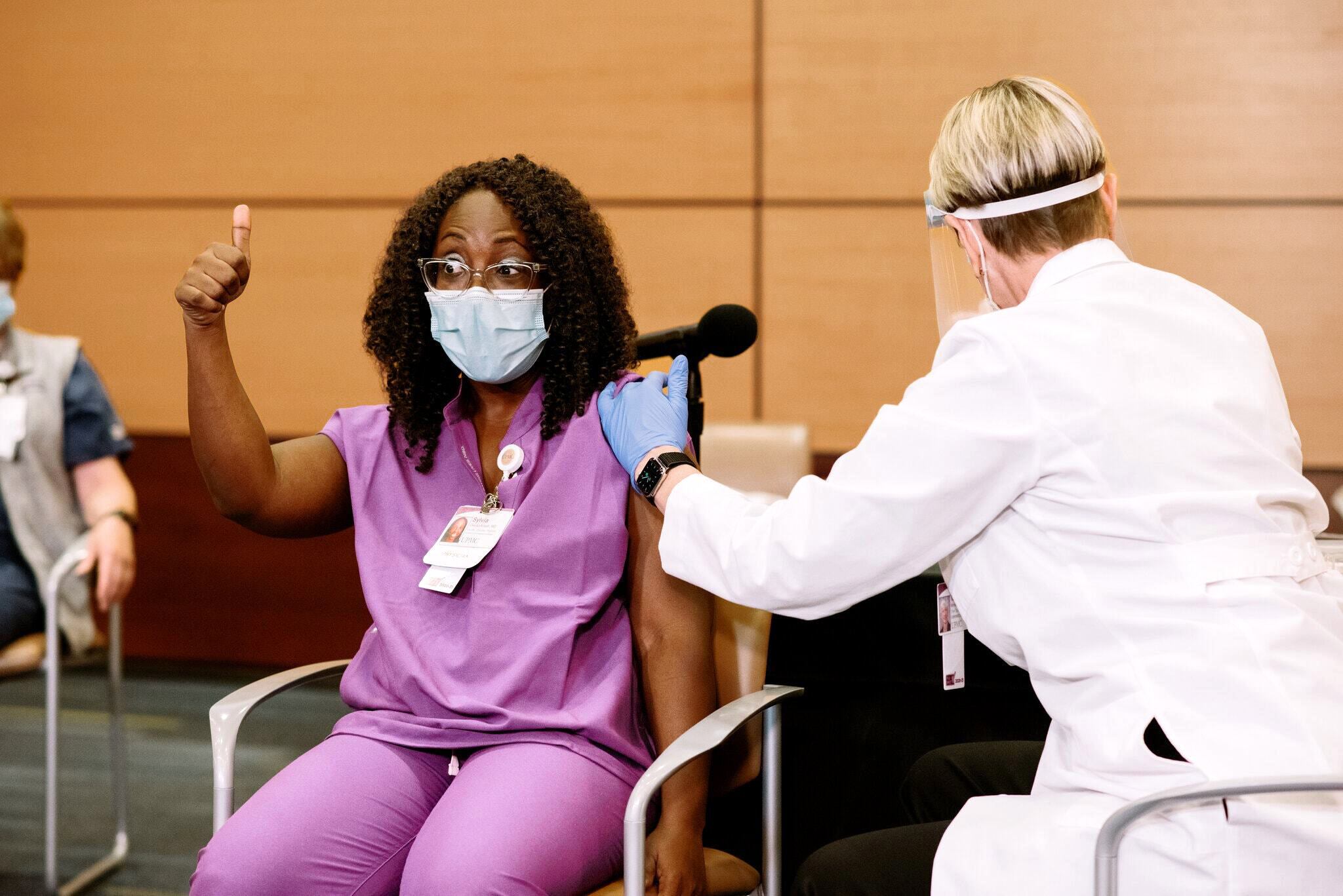
Particularly, according to its 2020 Impact Report, the company developed around 362,000 protective masks, donated 70,398 units of medical scrubs to 26 domestic healthcare facilities while also granting $100,000 to the Frontline Responders Fund, an organization focused on moving critical supplies from the factory to the frontline responders.
The Bottom Line
Not only has Figs redesigned the medical ware, but the brand has also played an undeniable part in reshaping the medical persona. With its firm focus on technical comfort, the forward-looking approach of community building and strong commitment to delivering good causes, there is every likelihood that the Los Angeles-based apparel company secures a bright future on the horizon.

